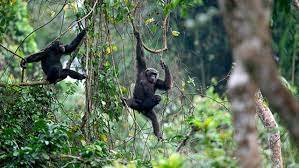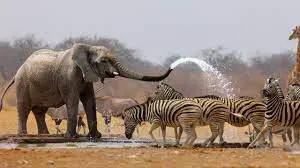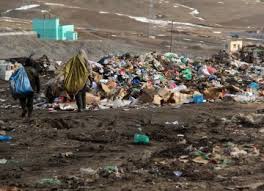Global Outlook of Wildlife Sector and International Wildlife Tourism
The trade in wildlife sector products, whether legal or illegal, is one of the most valuable businesses in the world.
Environmentally unsustainable anthropogenic activities have resulted in a significant increase in the atmospheric concentrations of greenhouse gases has substantially increased the global average ambient and sea surface temperature.
This situation has convoked changes in the natural climatic regimes in the global scale. Climate change has impacted natural terrestrial ecosystems and wildlife in multiple ways.
Tourism is classically regarded as traveling for recreation although this definition has been expanded in recent years to include any travel outside of one’s normal working or living area.
The global water cycle underpins primary production and nutrient recycling and provides fresh water and food for people. Wetlands are used for transport and hydropower.
They provide raw materials and genetic resources, including medicines. They also help to mitigate floods, protect coastlines and store and sequester carbon.
International Wildlife Tourism
Wildlife viewing has been identified as the activity forecast to have strong potential within the adventure travel sector in the world.
Wildlife tourism globally attracts very large numbers of tourists, though there are no reliable global estimates for this sector as a whole.
Judging by statistics available for North America, many millions more participate in other forms of viewing of free-ranging animals.
Probably even greater numbers of people participate in viewing animals in zoos, with an estimated 600 million visitors annually. Consequently, wildlife tourism generates very large financial revenues on a global scale.
Governing Global Wildlife Trade
The legal and illegal trades in wildlife are highly transnational – global trading routes link source countries with end- user markets via a series of complex networks, intermediaries and entrepôts.
As a result, governing the wildlife trade is a complex challenge, made even more difficult when that trade is illegal.
The transnational nature of the legal and illegal trades’ means that inter- state and multi- agency cooperation are required to ensure that the trade does not over- exploit particular species and risk driving them to extinction.
Read Also : Wildlife Prospect and Protecting Wildlife from Harmful Processes
The core aim of CITES is to monitor and regulate trade in wildlife and plants to ensure that they are not negatively affected by that trade.

It operates via biennial Conference of the Parties (CoP), a system of appendices and national scientific and management authorities.
CITES policy is based on the ‘precautionary principle’: policymakers must err on the side of caution if scientific experts cannot prove whether trade is damaging wildlife populations.
Changes in the Geographical Range of Fauna
The geographical distribution of wildlife is highly influenced by climatic regimes, often by the means of species-specific physiological thresholds of temperature, precipitation, ambient humidity, and moisture regimes (Hoffman & Parsons, 1997).
With on-going warming trends, these ‘bioclimate envelopes’ move towards poles or higher altitudes.
Moreover, Habitat occupancy of fauna can be highly influenced by presence of their preferred vegetation community, which could shift in response to climate change.
Therefore, within the limits of their dispersal capacity and resource wild fauna will track shifting climatic envelopes as well as their preferred vegetation community and shift their range poleward in latitude and upward in altitude
The geographical distribution of wildlife is highly influenced by climatic regimes, often by the means of species-specific physiological thresholds of temperature, precipitation, ambient humidity, and moisture regimes.
With on-going warming trends, these ‘bio-climate envelopes’ move towards poles or higher altitudes. Moreover, Habitat occupancy of fauna can be highly influenced by presence of their preferred vegetation community, which could shift in response to climate change.
Therefore, within the limits of their dispersal capacity and resource wild fauna will track shifting climatic envelopes as well as their preferred vegetation community and shift their range pole ward in latitude and upward in altitude.
World Marine Capture Production
Total capture production in marine waters was 81.5 million tons in 2014. There are still several countries that do not regularly report their annual catch statistics to FAO or for which data are not entirely reliable.
Wetlands in International Agreements
In December 2015, 196 governments agreed to an ambitious programme of climate change mitigation and adaptation under the UN Framework Convention on Climate Change.
This calls on States to develop Nationally Determined Contributions (NDCs) to address climate change, with nature-based solutions as a key component, including from wetlands.
These have a critical role in both adaptation and mitigation; in the latter through carbon storage and sequestration, particularly in peat soils and blue carbon in coastal waters.
In summary, conservation and wise use of wetlands are vital for human livelihoods. The wide range of ecosystem services wetlands provide means that they lie at the heart of sustainable development.
Yet policy and decision- makers often underestimate the value of their benefits to nature and humankind.
Today’s holistic approach to sustainable management and development of fisheries and aquaculture, as promoted by FAO’s Blue Growth Initiative aims at reconciling economic growth with improved livelihoods and social equity.
It balances the sustainable and socioeconomic management of natural aquatic resources with an emphasis on efficient resource use in capture fisheries and aquaculture, ecosystem services, trade, livelihoods and food systems.
Read Also : Traditional Storage of Roots and Tubers



